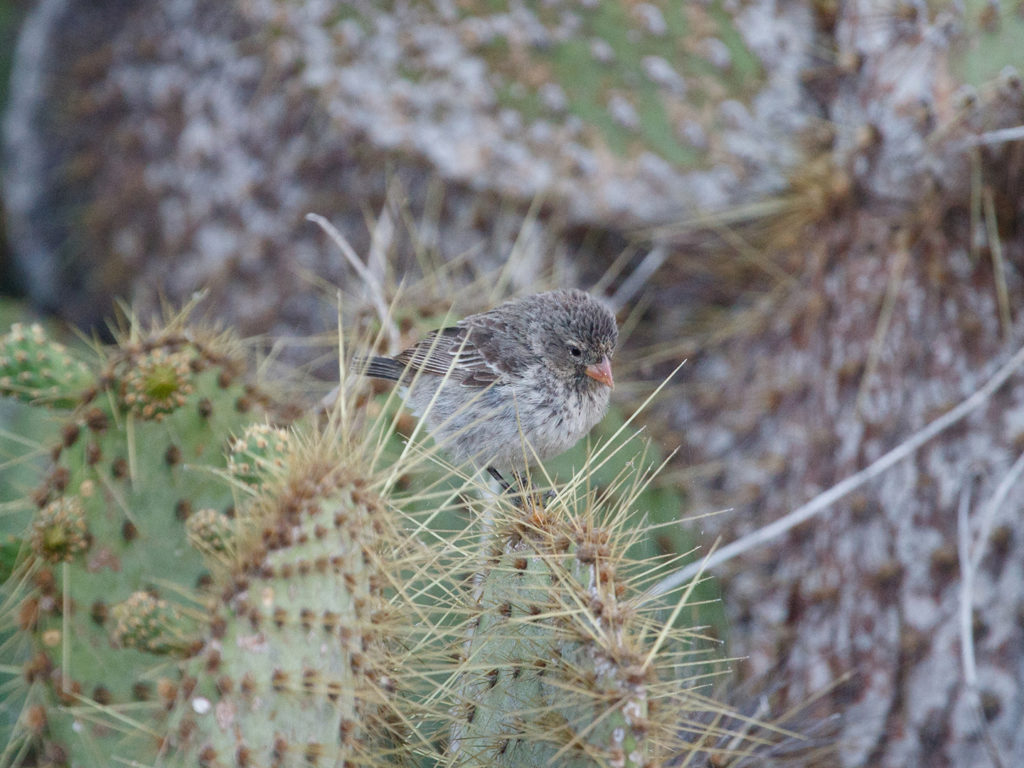Researchers Discover Genetic Key To The Rapid Evolution Of Darwin’s Finches
Story by Uppsala University

An international team of researchers, including Drs. Leif Andersson and Brian Davis from the Texas A&M College of Veterinary Medicine & Biomedical Sciences (CVMBS), has made a new discovery that advances scientists’ understanding of the evolution of Darwin’s finches.
In a study published today in Science Advances, the researchers identify 28 gene regions that have been particularly important in the evolution of Darwin’s finches. Variations in these gene regions did not occur from recent mutations but instead accumulated over time, as different species of Darwin’s finches have evolved with striking differences in beak morphology.
The loss of biodiversity, measured as the increasing number of species that have become extinct due to the loss of natural habitats and human activities, is of major concern at present.
Recognizing that the genes that played such a vital role in finch evolution have been present since the early stages of that evolution may provide conservation scientists with a new tool for battling extinction—protecting large, common species in addition to the small, rare species.
“Our study indicates that the loss of biodiversity is even more alarming than what is generally assumed because our main conclusion is that the rapid evolution of Darwin’s finches was dependent on genetic variants that evolved over hundreds of thousands of years,” said Andersson, a professor at the CVMBS and Uppsala University in Sweden. “In order to maintain biodiversity for future generations, it is as important to maintain large populations of common species as it is to save rare species from extinction, because the former is best equipped to adapt to future changes of the environment.”
In the study, the researchers compared the genomes of small, medium, and large ground finches, which are similar but show striking differences in body and beak size, to determine when the variations took place relative to when the different species evolved from their common ancestors.

Medium and large finch drawings adapted from Charles Darwin (Journal of Researches into the Geology and Natural History of the Various Countries visited by H.M.S. Beagle, under the Command of Captain FitzRoy, R.N. from 1832 to 1836; Henry Colbum, London, 1839); small finch adapted from Peter R. Grant.
“Our genetic analysis revealed 28 gene regions that showed consistent differences among these three species,” said Dr. Erik Enbody, who performed this analysis as a post-doctoral fellow at Uppsala University. “We were surprised that these gene variants were also present among other types of Darwin’s finches, implying that they have a longer evolutionary history than the species themselves. A major message is that these gene variants have been used and reused during the evolution of Darwin’s finches.”
“We also explored the function of the identified genes and noted that many of these genes are expressed in the developing beak, in line with our assumption that genes affecting beak morphology must have had a prominent role during the evolution of Darwin’s finches,” said Dr. Carl-Johan Rubin, a researcher at Uppsala University and first shared author on the paper.
Darwin’s finches are a classic example of adaptive radiations, groups of closely related species that have diversified in ecology and morphology from a common ancestral species within a relatively short period of time, often after a new geographic area has been colonized.
Since the ancestral species of Darwin’s finches arrived on Galápagos approximately one million years ago, 18 unique species have evolved, leading many evolutionary biologists to wonder how such rapid evolution took place.
Darwin’s finches are unique in that they evolved in a relatively undisturbed environment; the archipelago is located about 600 miles west of South America and has only had permanent human settlements within the last 100 years.

A key evolutionary change among these birds is the diversification of beak morphology that has allowed different species to utilize different food resources, including seeds of various sizes, insects, pollen and nectar from cactus flowers, and blood from other species.
“During our field work on the small island of Daphne Major during a period of 40 years, we found ample evidence of how variation in beak morphology has had a major impact on food utilization and survival among these birds,” said Drs. Peter and Rosemary Grant, of Princeton University, who have collected more than 6,000 blood samples from different species of Darwin’s finches over the years, some of which were used in this study.
The study also included the use of new samples collected to construct a high-quality genome map for Darwin’s finches using portable sequencing instruments on Galápagos.
“With the assistance of local researchers in the Galápagos, we were able to carry out the genome sequencing in the field where we collected the samples. This ensured that we had the highest quality DNA for sequence analysis,” Rubin said. “This new, high-quality map of the genome of Darwin’s finches will be a significant resource for studies of these interesting groups of birds.”
###
For more information about the Texas A&M College of Veterinary Medicine & Biomedical Sciences, please visit our website at vetmed.tamu.edu or join us on Facebook, Instagram, and Twitter.
Contact Information: Jennifer Gauntt, Director of VMBS Communications, Texas A&M College of Veterinary Medicine & Biomedical Sciences, jgauntt@cvm.tamu.edu, 979-862-4216


